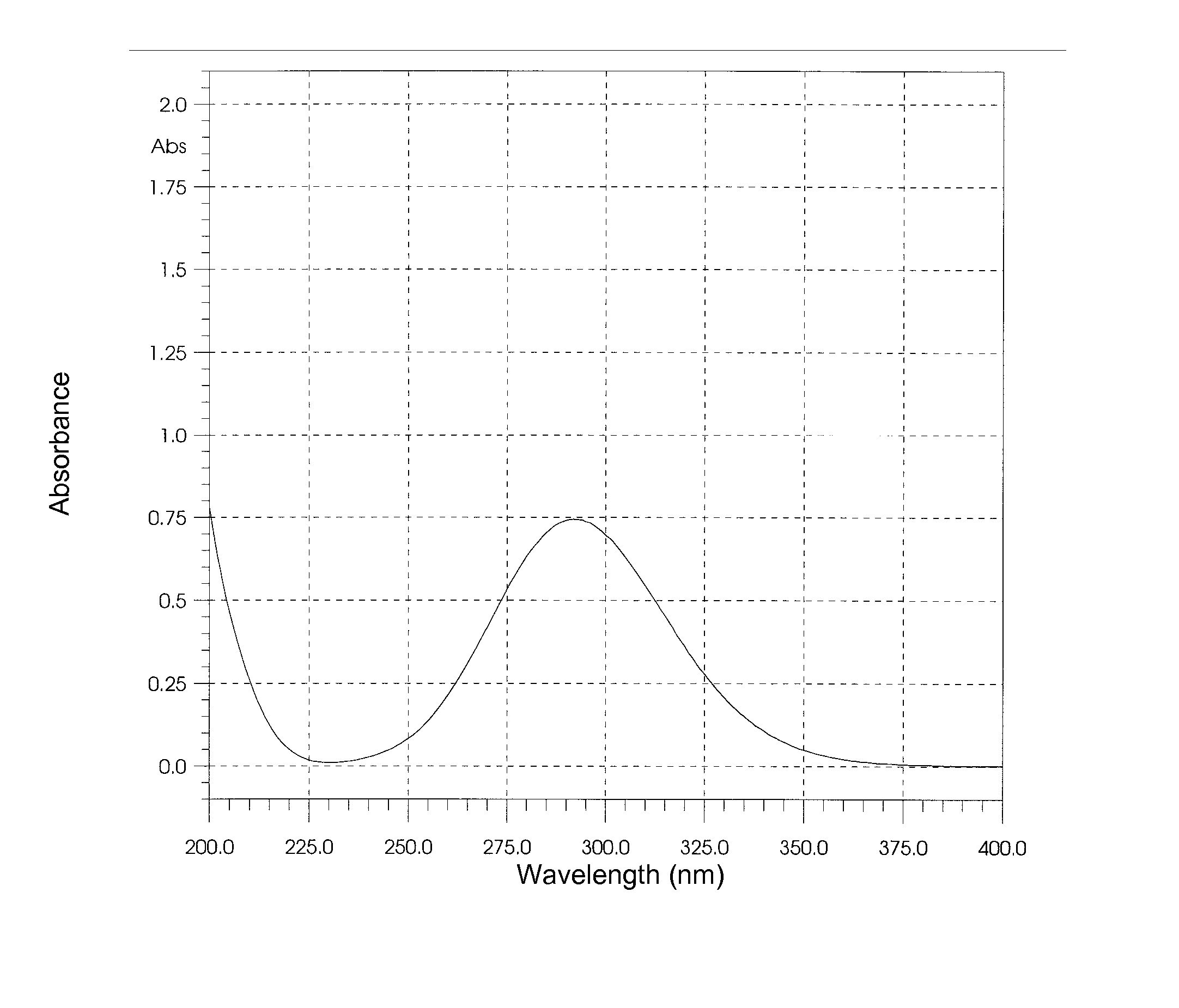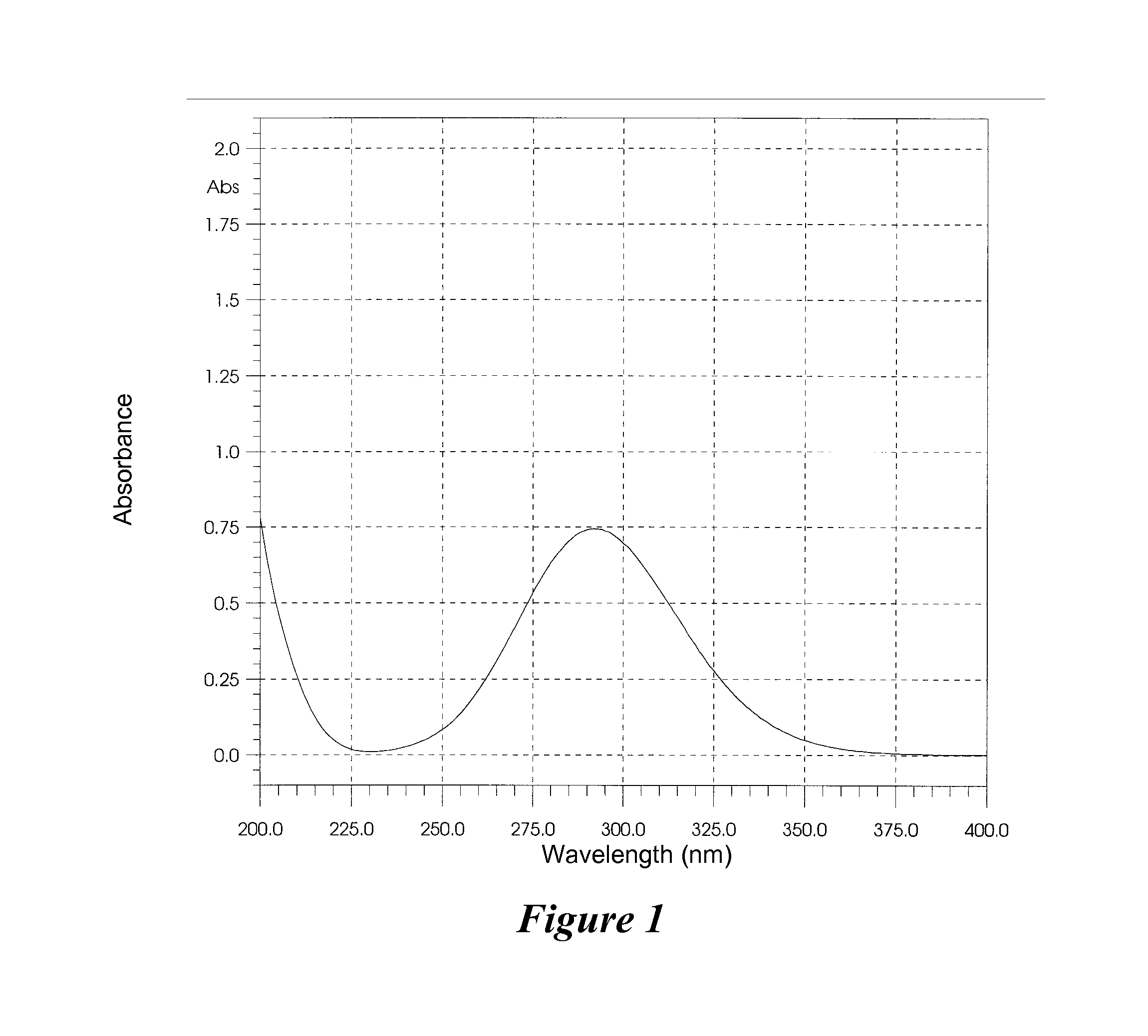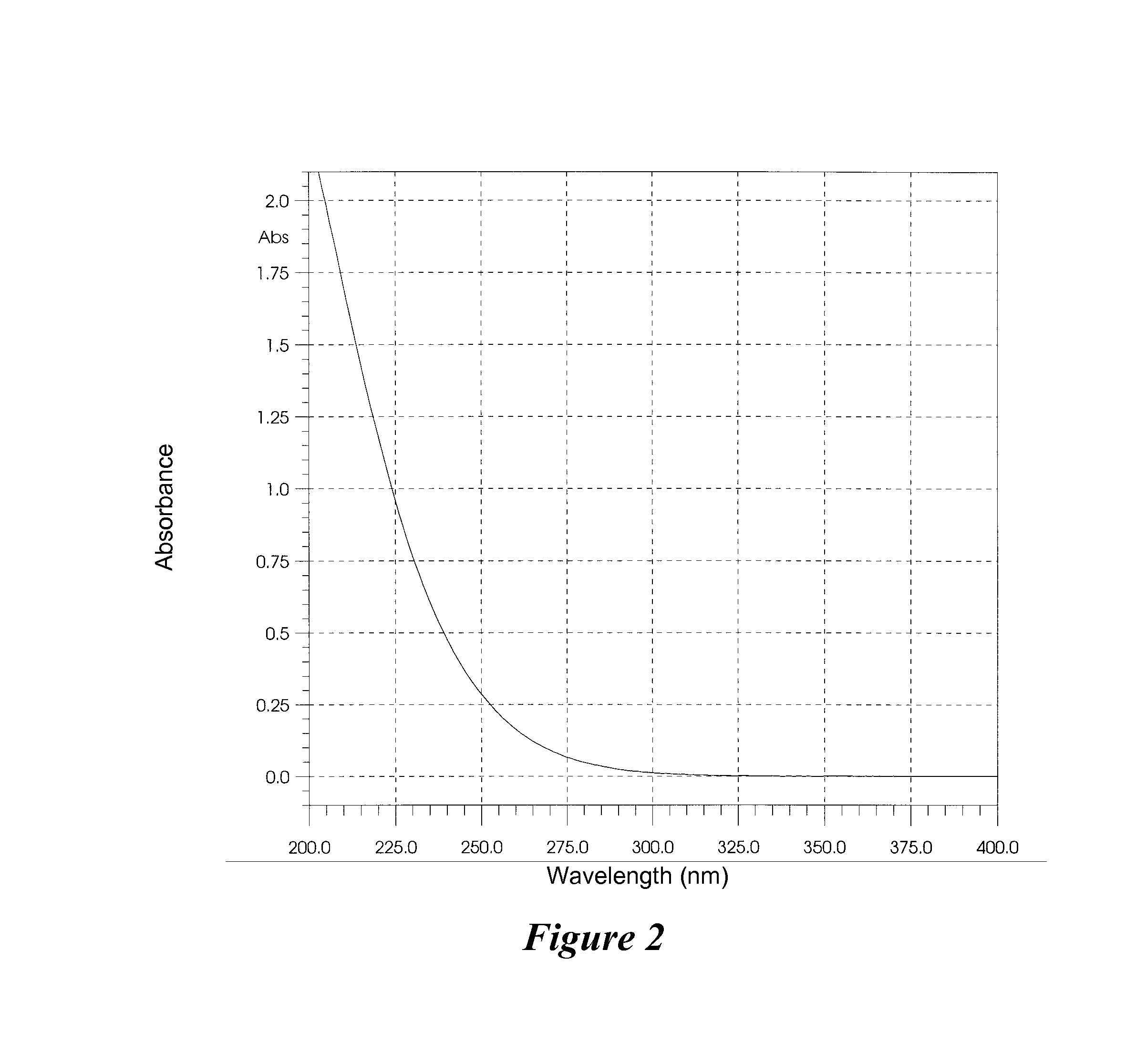Binary compositions and methods for sterilization
a technology of compositions and sex, applied in the field ofbinary compositions and methods for sterilization, can solve the problems of high corrosiveness and inherent toxicities, the antiseptic capacity of these peroxides is relatively poor, and the sex of the peroxide is considered a significant disadvantage, so as to achieve rapid detoxification and microbicidal potential, the effect of short reaction time and rapid detoxification
- Summary
- Abstract
- Description
- Claims
- Application Information
AI Technical Summary
Benefits of technology
Problems solved by technology
Method used
Image
Examples
example 1
Microbicidal Activity Against Staphylococcus Aureus
[0131] The augmented microbicidal activity of the binary system against Staphylococcus aureus compared to that of sodium hypochlorite solution alone or hydrogen peroxide solution alone was demonstrated as follows.
[0132] Materials
[0133] Bacterial suspensions, specifically Staphylococcus aureus (ATCC 6538) in this example, were prepared by the shake flask method to achieve late log to early stationary phase growth. Bacteria were grown 24 hours in trypticase soy broth (TSB) at 35° C. The cultures were centrifuged at 4,000 rpm for 10 minutes and the supernatants removed. The pellet was collected and washed twice with sterile 0.9% normal saline. The washed microorganisms were suspended and diluted with normal saline to a 3 McFarland standard, i.e., approximately 109 bacteria colony forming units (CFU) per ml. Actual colony counts are confirmed by serial dilutions (10−1 to 10−5 or 10−6) plated on trypticase soy agar (TSA) and incubated...
example 2
Microbicidal Activity of the Binary System Against Escherichia coli
[0153] The augmented microbicidal activity of the binary system against Escherichia coli (ATCC 25922) when compared to sodium hypochlorite solution alone or hydrogen peroxide alone was demonstrated using the general procedure described in Example 1. In this study, the contact time of the organisms with hydrogen peroxide was reduced from 30 minutes in Example 1 for S. aureus to 5 minutes in the current example against E. coli.
TABLE 6Microbicidal Activity of the Binary System Against Escherichia coliNaOClNaOClH2O2H2O2Log 10ConctimeConcTimeStarting InoculumTotal Viability(CFU + 1)LogmMminmM(min)(CFU)(CFU)SurvivorsReduction0.0315881516300001602.24.00.021588151630000602004.81.40.0115881516300001036005.01.20.031516300009943.03.20.021516300007840005.90.30.0115163000012180006.10.1881516300005880005.80.4
Note:
The starting inoculum was 6.2 log10. The volumes of sodium hypochlorite and hydrogen peroxide, were 0.5 ml each.
[0...
example 3
Microbicidal Activity of the Binary System Against Bacillus subtilis Spores
[0156] The augmented microbicidal activity of the binary system against Bacillus subtilis when compared to sodium hypochlorite solution alone or hydrogen peroxide solution alone was demonstrated using the general procedure described in Example 1. Suspensions of Bacillus subtilis (ATCC 19659) containing 100% spores, as confirmed by microscopy, were obtained by washing the spun-down cells with 50% ethanol to eliminate the vegetative form. Starting inoculum of approximately 1-3×106 CFU was used as in Example 1.
[0157] Table 8 presents the results of hypochlorite solution or hydrogen peroxide solution alone against the spores of the Gram positive bacterium, Bacillus subtilis. These results serve as reference data for comparing the microbicidal activity of the binary system presented in Table 9
TABLE 8Microbicidal Activity of Sodium Hypochlorite Solutionor Hydrogen Peroxide Alone Against Bacillus Subtilis SporesN...
PUM
 Login to View More
Login to View More Abstract
Description
Claims
Application Information
 Login to View More
Login to View More - R&D
- Intellectual Property
- Life Sciences
- Materials
- Tech Scout
- Unparalleled Data Quality
- Higher Quality Content
- 60% Fewer Hallucinations
Browse by: Latest US Patents, China's latest patents, Technical Efficacy Thesaurus, Application Domain, Technology Topic, Popular Technical Reports.
© 2025 PatSnap. All rights reserved.Legal|Privacy policy|Modern Slavery Act Transparency Statement|Sitemap|About US| Contact US: help@patsnap.com



